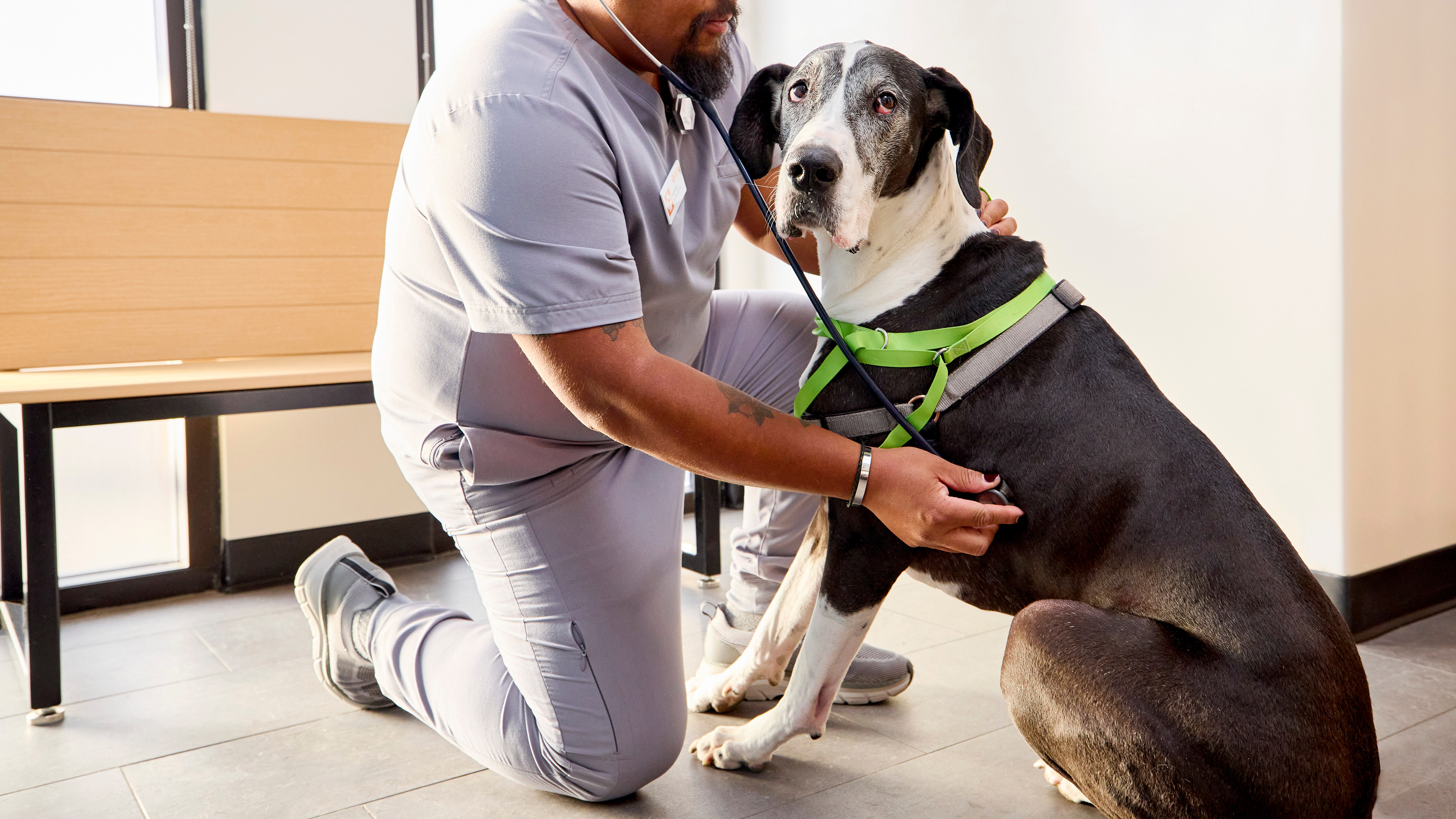the truth about skin issues, allergies, and diet
Food is powerful. It’s essential for building muscles and bone, processing oxygen, and supporting vision and hearing. It can also directly affect your dog’s or cat’s skin and coat. If you’re noticing signs of itchiness, a change to your pet’s diet may be in order.
We spoke with Dr. Elizabeth Gammon, who shared information on how it all works. Read on to understand how to partner with your veterinarian to make the best choice for your pet’s needs and how to include food in their treatment plan.
Is my pet itchy?
Sometimes an itchy pet can be tough to spot. Scratching is a more obvious sign, but there are some other subtle ones to look out for too. These include redness, hair loss, scabs, scrapes, and/or acne-like bumps.
In dogs, itchiness can also look like:
-Rubbing their face or body on carpets/furniture
-Shaking their head back and forth
-Licking their paws
-Chewing on toes
-Rust-colored saliva stains on white fur
In cats, itchiness can also look like:
-Thin hair on belly
-Hair loss
-Excessive grooming
What could the issue be?
The first step in finding relief for your pet’s skin issue is figuring out what’s causing it. When you bring your dog or cat to the vet, they’ll do a thorough exam. Your vet will ask about your pet’s history and habits, as well as check for signs of parasites and infection. If your furball is older, they may also recommend blood work and a urine test to rule out metabolic conditions that can affect skin health.
After the exam and assessing any test results, your vet will be able to determine if allergies seem to be the culprit. Then, they’ll likely take you down one of two paths: seasonal versus non-seasonal allergies.
Non-seasonal allergies + the elimination food trial
Are your pet’s symptoms constant year-round? This can be a sign of a food allergy, and the next step is an elimination food trial. This process typically takes 8 to 12 weeks and involves using hydrolyzed therapeutic diets. Food allergies are usually a response to a certain protein (e.g., chicken, beef, pork, etc.) and these diets use a process called hydrolysis to adjust the protein source. With hydrolysis, the protein molecule is split apart so small that it won't cause an allergic reaction.
Doing an elimination food trial means only feeding your pet food that’s been approved by your vet. Using any non-approved treats, toppers, or table scraps could easily affect the results of the trial. Your vet will partner with you to ensure your pet can get appropriate treats and still have a successful food trial.
If during the trial your pet’s symptoms improve, you'll reintroduce the suspected food allergen to confirm its effect and get the diagnosis.
If your pet’s symptoms do not improve after a food trial, your vet may recommend a medication trial and consider an environmental allergy workup. Year-round symptoms can still apply to environmental/seasonal allergies, especially in areas of the country where allergens are a constant presence. Environmental allergens can be anything from grass to pollen to dust mites or even human dander!
Seasonal allergies
Do your pet’s symptoms come and go throughout the year? Are they worse in certain seasons and/or environments? This is a clue your pet may be experiencing seasonal allergies, or atopic dermatitis (also known as atopy).
If your pet doesn’t find relief with this treatment route, the next step is often the elimination food trial if it hasn’t been done already.
Is nothing working?
Secondary yeast/bacterial infections on the skin and ears often come along with a compromised skin barrier typical in itchy pets and can perpetuate a vicious cycle of itching, further complicating the diagnosis of the underlying cause. If your vet has ruled out secondary infection and food allergy with an appropriate food elimination trial, and no medications are giving your pet relief, the next step may be biopsies or referral to a veterinary dermatologist.
Quick note: Therapeutic diets can be costly and should be thought of as “medicine” that’s necessary for certain conditions. If cost is an issue, talk to your vet to see if they have other recommendations. They can help you find the best option for you and your pet.
We understand that finding relief for your pet’s itchiness can take a good deal of effort and expense — from vet visits and lab work to food trials and medication. I hope this helps clear up what can be a very confusing diagnostic pathway and empower you as your pet’s best advocate for relief from itchiness. When you finally uncover that perfect solution, all of your hard work will be worth it, and the relief you and your sweet pet will feel is monumental!
 Mites and mange
Mites and mange Podcast - Not Just Fluff
Podcast - Not Just Fluff











